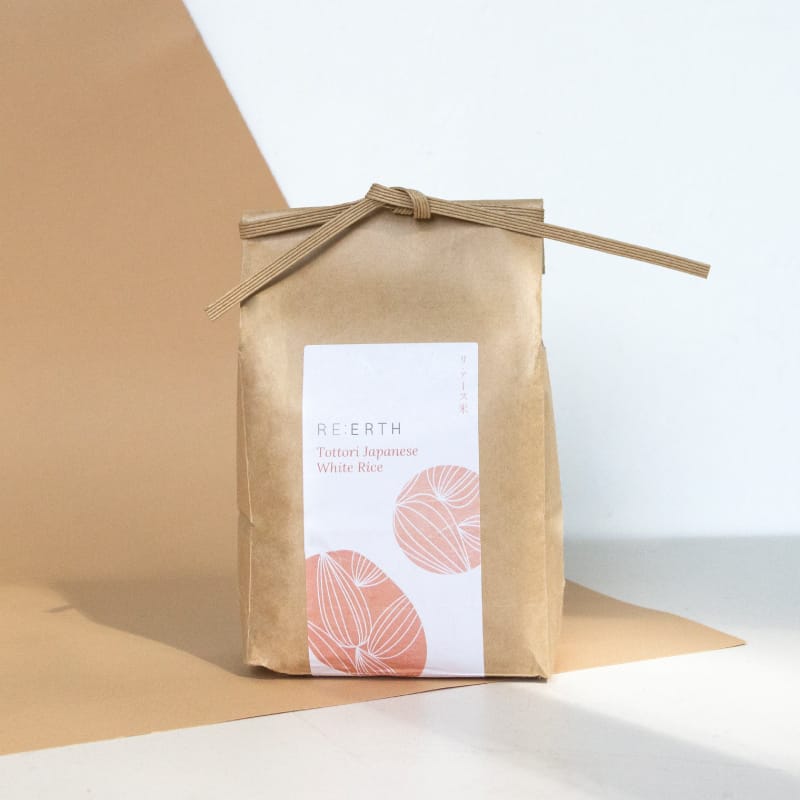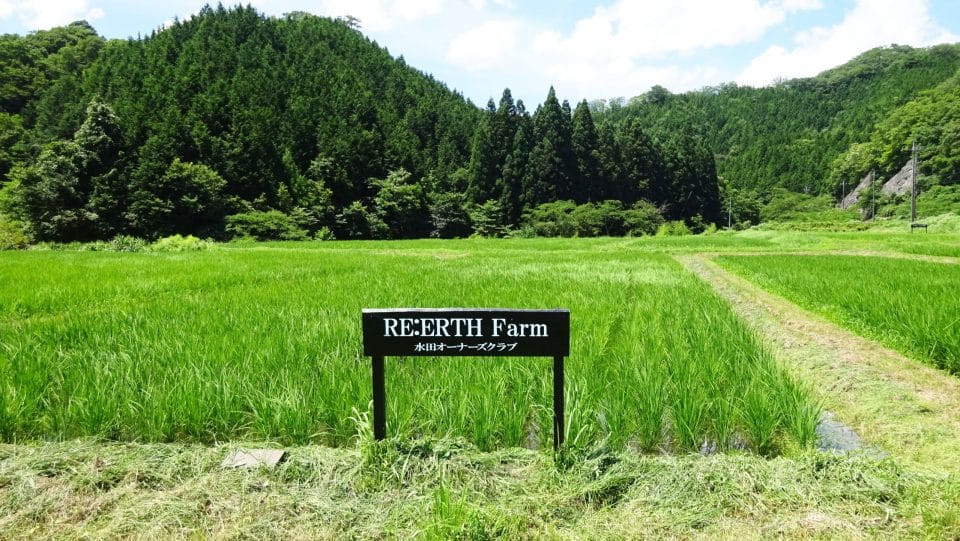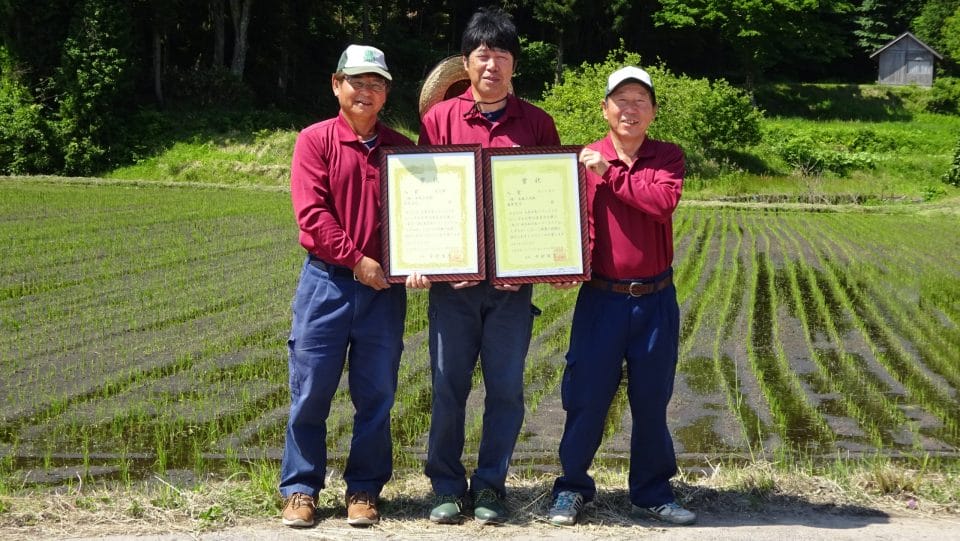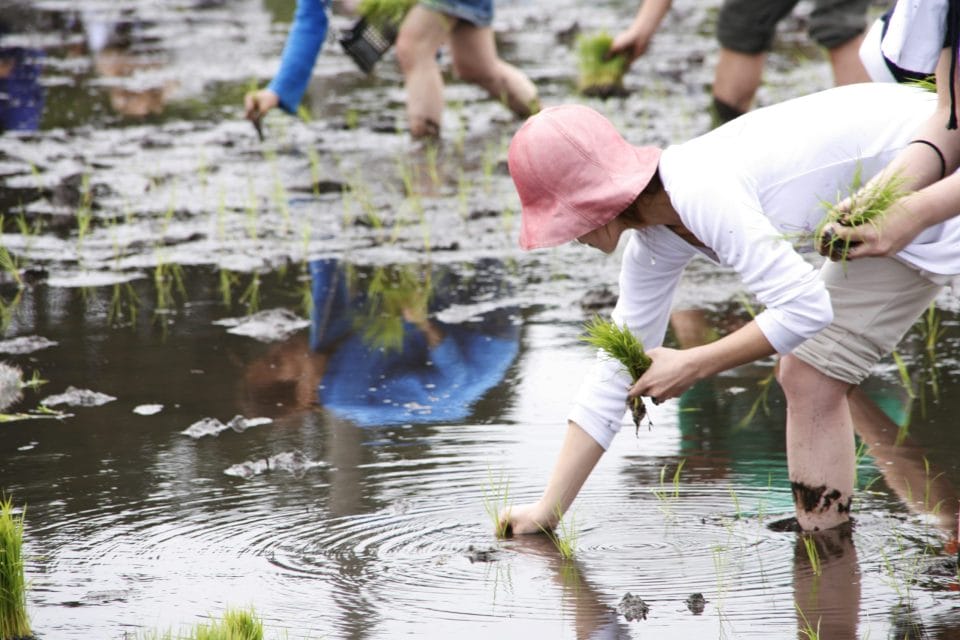
RE:ERTH’s Premium Koshihikari rice with all pun intended is wheat-ly good, from its make of harvest down to its wonderful taste.
Eating rice is an act that is rarely exciting. Sure, it is a vehicle for accompanying dishes presented to one or tempers the fire of sauces but Shinji Yamasaki is determined to swerve it from a pantry staple into something nutty in concept. RE:ERTH’s Premium Koshihikari rice is sustainable and delicious — creamy, sweet, and yields beautifully with just a soft bite. While Japanese rice does have a higher glycolic index than other rice, the road to glutinous self-destruction only occurs when one eats too much of it.
 “RE:ERTH is an abbreviation of “Reencountering Earth” and as you know, we really value community and sustainability. When I came across the opportunity for us to support local rice farmers and do something for our RE:ERTH community, as well as the broader world community, we knew it was a no-brainer!” says Shinji Yamasaki, the founder and CEO of the brand.
“RE:ERTH is an abbreviation of “Reencountering Earth” and as you know, we really value community and sustainability. When I came across the opportunity for us to support local rice farmers and do something for our RE:ERTH community, as well as the broader world community, we knew it was a no-brainer!” says Shinji Yamasaki, the founder and CEO of the brand.
“Koshihikari rice is the most widely sought-after premium Japanese rice. It’s known as rice with the best taste and texture. It is obviously my favourite as well. The Koshihikari rice grown for RE:ERTH is also very special because our cultivation manager, Mr. Fujiwara is not one, but a two-time winner of the Hinokawa Rice Contest, one that has over 300 local rice producers competing each year!”
 Developed in 1956, Koshihikari rice became one of the most widely grown white pearls in Japan post-World War II when the palates of people turned towards eating great quality, and rice was incredibly palatable to the people as it was easy to produce. The grains have good adaptation to different environments, carries tolerance to pre-harvest sprouting and to the cold.
Developed in 1956, Koshihikari rice became one of the most widely grown white pearls in Japan post-World War II when the palates of people turned towards eating great quality, and rice was incredibly palatable to the people as it was easy to produce. The grains have good adaptation to different environments, carries tolerance to pre-harvest sprouting and to the cold.
While the genomes of Koshihikari rice have been split to form several others — Kitakomachi, Hitomebore, Hinohikari, and Milkyqueen — that claim to supplant their parentage, Yamasaki focuses instead on what the rice can do for one from the paddy down to the plate.
“As I’m sure you can imagine, farming in Japan is an integral part of both our culture and economy. Unfortunately, as we modernise and become a more service-oriented economy, the younger generation shies away from wanting to become farmers and are instead moving to big cities. In that process, the agricultural sector that is vital to Japan has in recent years been taking a hit, with farmers having to bear most of that burden. While our progam is still small, our hope is to grow it in order to further supply a more stable income for the local farmers.”
 “All plants consume carbon dioxide and create oxygen. During the process of growing our rice, the rice plant consumes an estimated 400kg of carbon dioxide. The more we grow this program, the more rice we can plant and the more we can provide for the farmers, our customers, and our planet. Currently, our production volume is still quite small. We felt that in order for us to be able to have more people share in the experience, it would be better to package the rice at 1kg. In the future, we would love to supply in larger packages!”
“All plants consume carbon dioxide and create oxygen. During the process of growing our rice, the rice plant consumes an estimated 400kg of carbon dioxide. The more we grow this program, the more rice we can plant and the more we can provide for the farmers, our customers, and our planet. Currently, our production volume is still quite small. We felt that in order for us to be able to have more people share in the experience, it would be better to package the rice at 1kg. In the future, we would love to supply in larger packages!”
How does one eat it? Yamasaki does it plainly with no need for finessing or fuss. “Call me old school but I eat my rice just straight up white, in a bowl.”
Once you’re done with this story, click here to catch up with our March 2022 issue!






